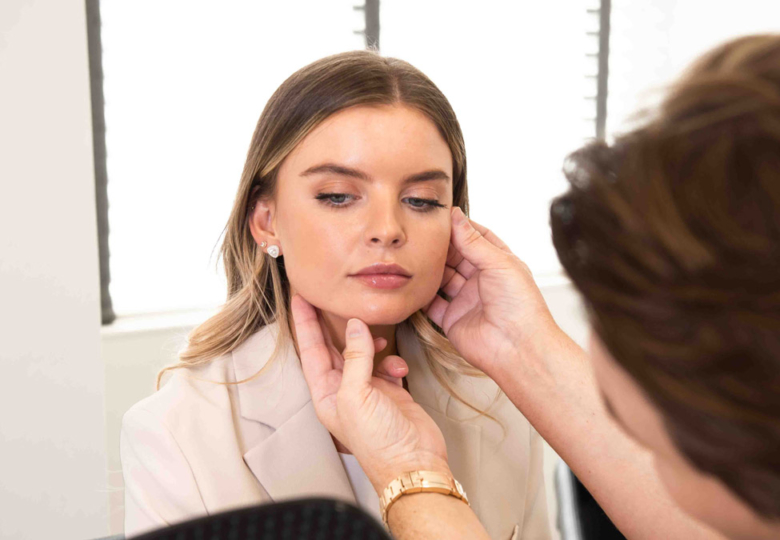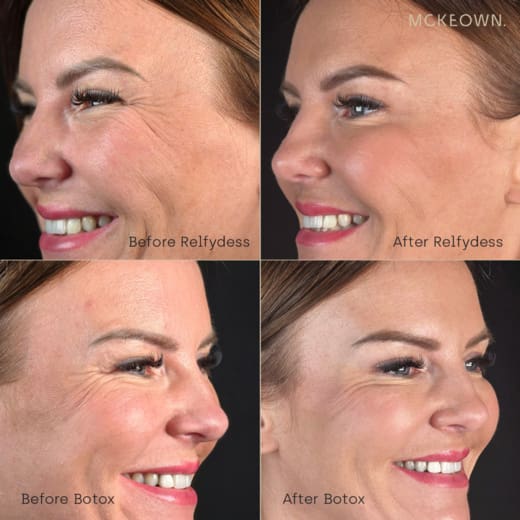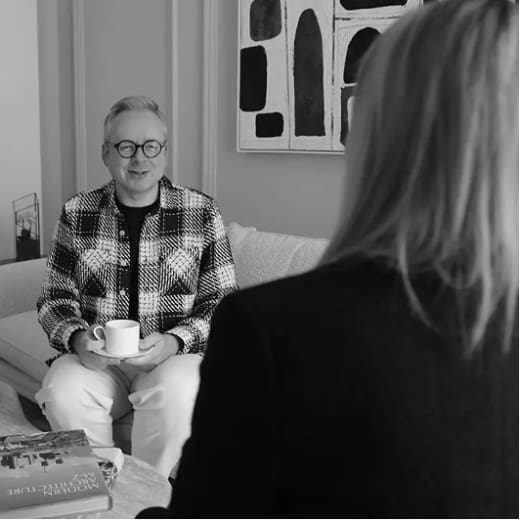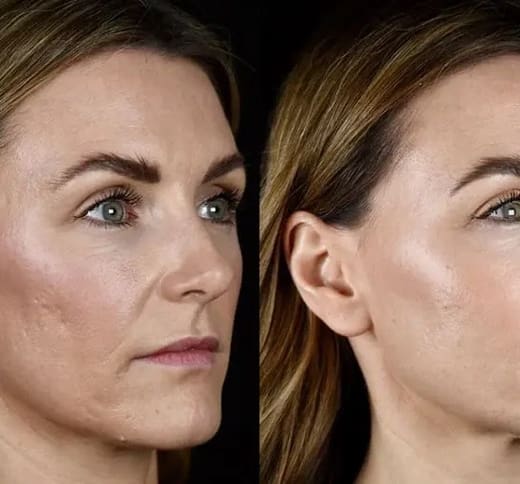McKeown Medical
167 Bath Street, Glasgow, G2 4SQ
Date posted — 6.03.24
Cheek fillers are, in short, dermal fillers that have been injected into the cheek to restore volume loss. You will often hear people talk about having cheek fillers to lift the face. This is a bit of a misconception. Volume loss is an important part of the ageing process, and it happens most prominently in the cheek, so correcting it offers a very powerful facial rejuvenation. However, that is technically not a facelift. Because cheek fillers are so effective at rejuvenating the face, they are one of the most popular dermal filler treatments that we perform.
When we think of the cheek and cheek fillers, people often focus on the front part of the cheek – or the apple of the cheek. The cheek is actually a much bigger area than this, and it includes the back of the cheek (in front of the ear) as well as the lower part of the cheek. All of these different parts of the cheek change and lose volume with age, so when we are performing cheek filler injections, it’s important that we assess the whole cheek area rather than focusing simply on the front of the cheek, which is what creates the dreaded hamster cheeks.
Almost all of the fillers we inject into the cheek are hyaluronic acid fillers. We use hyaluronic acid products predominantly because they are safe and reliable and they also last a long time. Occasionally, especially if there are a lot of dynamic lines (when you smile) on the cheek, we may also use a calcium hydroxyapatite type of filler known as Harmonica. In addition to hyaluronic acid, this product also has some hydroxyapatite particles that stimulate your own collagen production and improve skin quality. In most cases, we start with hyaluronic acid and add Harmonica only if it’s required.
It is possible to enhance the cheek contour using cheek filler, although most of our patients do not want us to change the shape of their faces. They simply want us to restore lost volume and recreate the youthful softness in their face. If a patient has a particular facial shape, however, that would benefit from contouring, for example, a long face that would benefit from some extra width, then we can also use cheek filler to achieve this.
Loss of volume from the face is one of the most fundamental changes that happens as we get older. The cheek is one of the most prominent locations on the face where this happens. We lose some of the deep fat from the cheek, but the cheekbone itself is also reabsorbed and moves back, contributing to the impact of volume loss, which leaves the mid-face looking hollow, and patients complain that they look exhausted – even when they are not. Cheek filler is a great way to fix this problem, reducing the tired appearance that many of our patients in their 40s and above complain of.
Since one of the key changes that happens to the face as we get older is loss of volume, restoring volume loss with cheek filler is one of the most effective ways to restore the youthful softness to the face.
Before your treatment, we need to begin with a consultation to understand what it is you don’t like about your face and work out if cheek filler is the best treatment option for your concerns. Cheek filler is a really powerful procedure that can have an incredibly rejuvenating impact on the face – but it’s not a magic bullet that fixes everything. So first, we need to establish what you see in the mirror that you don’t like and then work out the best treatment plan that is likely to address your concerns.
The procedure itself is usually quite straightforward. We inject the dermal fillers into the cheek using a blunt-tipped cannula, which is a special instrument that hurts less and causes less bruising and swelling than a traditional needle. We normally start with one entry point at the nose to mouth lines (or nasolabial folds) that allows us to manoeuvre the cannula around the different compartments of the cheeks. Occasionally we need to make a second entry point at the back of the cheek to allow us to access the fat at the front of the ear, depending on the size and shape of your face and what we need to do in your particular circumstances.
During the procedure, we frequently stop and get you to sit up so we can check our progress and make sure that we are achieving the desired results.
Immediately after the procedure, you should be able to see that there has been an instant improvement, and you should notice a refreshed appearance, although it’s often difficult to pinpoint exactly what has changed. The differences are very subtle but noticeable. There will be a little bit of redness, especially around the injection site, although any redness and swelling are usually very subtle, and most patients are fine to get back to normal activities immediately. The results do, however, continue to improve over the next couple of weeks as the filler settles into place and integrates with your tissues. The only aftercare instruction we are especially keen on is making sure that the treatment area remains clean, which means no make-up for the first 24 hours. After that, you can resume wearing makeup, and you can use that to cover any bruising – although most patients don’t bruise with cheek filler.
You should consider dermal fillers if you have noticed signs of volume loss on your face and you don’t like the appearance looking back at you in the mirror any longer. For most people, you start to notice the appearance of volume loss in the cheek area in the late 30s or early 40s, and it gets progressively worse from there. Some people don’t mind the signs of ageing – which is great – but if the sunken hollowness and tired expression bother you, then dermal fillers are worth considering.
Individuals with Lack of Volume in the Cheeks:
Some people naturally have very hollow cheeks, even from a young age, which can convey a tired or sickly appearance. In these individuals, adding some volume and softness to the face can help both improve the appearance and your self-confidence.
Those Seeking Enhanced Cheek Contour:
There is currently a fashion trend for exaggerated cheekbones right now. I don’t believe that your face should ever follow fashion trends, so I don’t think adding cheek filler for the sake of it is a good idea. If you have a long face shape, for example, then adding a little width to the cheek can help create a more pleasing silhouette. Likewise, if you have a rounder face shape, then sometimes adding a little highlight of definition at the top of the cheekbone can create the illusion of a more slender face.
Individuals with Age-Related Volume Loss:
If you have age-related volume loss, then you are the ideal candidate for cheek filler. Cheek filler is the most simple and predictable way of adding volume back to the cheeks. Other options include fat grafting and surgical implants, both of which are much more invasive and less predictable. Cheek filler gives you an option that you can add and adjust as you see fit until you achieve an appearance you are happy with.
Cheek filler and fat grafting are both good options to restore lost volume from the cheek. Fat grafting was previously considered the best option because – most people – have plenty of donor sites, and if you are lucky, the results are permanent. However, fat grafting is not without its problems. One of the biggest issues is that it can be unpredictable. Sometimes, all of the fat sticks, sometimes none of the fat sticks, and most of the time, some of it sticks, and some doesn’t – so it’s hard to accurately judge the outcome. Fat grafting is also quite an invasive procedure, and if you get lumps from the fat, it can be very difficult to fix them. The other issue with fat is that it is subject to fluctuations in your weight: so if you lose weight in the future, the graft will shrink, whilst conversely, if you gain weight, the fat will expand, and what was initially a good result could become an exaggerated result. Because of these issues, dermal fillers are now the much more popular method of cheek augmentation.
Using dermal fillers for cheek augmentation is much more predictable, allowing you to easily add more volume if you want or even dissolve some if you think it is too much. With the modern generation of dermal fillers that can last up to two years (or potentially even longer – see my other blog on filler longevity), fat grafting has become almost obsolete in recent years, with most doctors now preferring the flexibility and reliability of dermal filler treatment.
Personalising your cheek filler treatment is key to achieving results that not only rejuvenate but also harmonise with your natural facial features. It begins with a thorough consultation to understand your unique concerns and aesthetic goals. Each face is different, and so is each approach to cheek filler application. Whether you’re looking to simply restore lost volume or subtly enhance cheek contours, the treatment is tailored to fit your individual needs. The art of personalisation lies in assessing the entire cheek area – the front, lower part, and back – ensuring a balanced and natural-looking enhancement.
Selecting the right type of filler is a critical step in your cheek filler journey. Hyaluronic acid (HA) fillers, such as Juvederm or Restylane, are widely used due to their safety profile, longevity, and the fact they can be dissolved if necessary. They are ideal for most patients seeking volume restoration. Calcium hydroxyapatite fillers like Harmonica can be considered for those requiring a firmer structure or collagen stimulation. These are particularly effective in areas where dynamic lines appear. Your doctor’s expertise and understanding of your facial structure play a pivotal role in recommending the most suitable filler type, ensuring results that enhance your natural beauty while meeting your aesthetic aspirations.
Most cheek fillers use hyaluronic acid products, like Juvederm or Restylane. These products are long-lasting, safe, and can dissolve if you have a complication or do not like the outcome.
Calcium Hydroxyapatite is a more firm product and is recommended by some doctors for creating sharp definition in the cheekbones. Because it is not dissolvable, we do not like using it. We occasionally use calcium hydroxyapatite in a hyaluronic acid gel (Harmonica) in areas of the cheek where we want to stimulate collagen production to improve skin quality – however, this is usually only after we have first restored most of the volume using hyaluronic acid fillers.
Poly-L-Lactic Acid (PLLA) is a product that works by creating an inflammatory response, causing our body to lay down new collagen fibres. This sounds like an appealing concept, although these products have a high incidence of forming lumps and nodules, and so are best not used on the face.
The cost of cheek filler treatment varies depending on the amount of volume loss you have and the amount of correction you want to achieve. Typically, 2 – 6mls are required to adequately cheek the whole cheek. At a cost of £300 – £325 per ml, this works out to £600 – £1950. It’s possible to do the treatment in stages using a couple of mls per session until you achieve the ideal correction for your own preferences.
The most basic checks are to find a registered medical practitioner in a licensed medical facility. This is to ensure basic safety. Next, you need to make sure that you choose a doctor who has the same aesthetic taste as you. The best way of establishing this is by looking at before and after examples of the doctor’s previous work. You will get a good idea of the sort of outcomes they usually achieve with cheek filler just by looking at the photos. Some doctors prefer an extreme, sharp look, which may be to your taste. Our doctors aim for a soft, natural appearance. By looking at photograph examples of the doctor’s work, you will soon be able to tell if that doctor is a good match for what you want to achieve.
In general, cheek filler lasts quite a long time. Juvederm Voluma, for example, which we often use, is now licensed to last up to two years. We normally suggest reviewing the outcome in 18-24 months to assess if a further touch-up is required.
Most people start to benefit from cheek filler in the late 30s or early 40s, although it depends on the individual, their anatomy, genetics, and lifestyle history. People who smoke or get a lot of sun exposure tend to age more rapidly than those who have healthier lifestyles. Often, our cheek filler patients are older than this, however, because the earlier stages of volume loss didn’t bother them – which is also fine. Just because you don’t start treatment as soon as the volume loss starts doesn’t mean you can’t catch up later.
It’s a common misconception that cheek fillers lift your face. They don’t. They restore volume to your face, which makes your face look more youthful and less tired – but it doesn’t actually life. That being said however, correcting volume loss with cheek filler is often one of the first places we start when we want to achieve a more youthful and rested appearance, because of the profound impact loss of volume has on the appearance of ageing.
It is worth getting cheek filler if you are bothered by a tired or sunken appearance. If you feel that your face looks tired or drawn, it is often related to loss of volume from the face, which can be corrected by performing dermal filler injections. It is often the first place that we recommend restoring volume in patients who want to achieve a more global rejuvenation. We also recommend adding cheek filler for patients who are undergoing more invasive facial rejuvenation, like facelift surgery.
There may be some situations where 1ml of cheek filler will make a difference, but in general, the cheek is such a large area, and 1ml is such a small volume that it will not be enough to make a meaningful correction. In general, 2mls is the minimum amount we would use in one session. Often, patients need more than 2mls, but they choose to do it in stages of 2mls per session. It can sometimes take 5 or 6mls to achieve an adequate cheek volume correction.
Generally, cheek fillers are a painless procedure. We normally inject the filler into the cheek using a blunt-tipped cannula, which minimises tissue trauma and makes the treatment much less painful. In addition, the filler materials usually have some built-in anaesthetic, which makes it numb as it goes, so patients feel very little or no pain during the procedure.

Read on for answers to some of the most commonly asked questions
The main benefit of the non-surgical facelift is that it avoids the use of surgery and, therefore, has fewer risks and less downtime. It’s an excellent option for patients who are primarily concerned with the ageing of the face. When a patient is also significantly bothered by the ageing of the neck, it may be best to consider a surgical procedure.
Most of our non-surgical procedures are carried out either with no need for local anaesthetic or with the application of a topical numbing cream.
We abandoned the use of threads over a decade ago in our practice. Whilst threads may look (and sound) attractive, in our experience, the results are short-lived lived and they are not as effective as other non-surgical options. We therefore prefer to opt for more reliable methods that deliver consistent, predictable results for our patients.
The effects of most non-surgical facelift procedures can be seen almost instantly, although they will typically improve up until two weeks after treatment. If we have combined laser or skin tightening with your treatment, it can take up to three months to reach maximum effect.
Medical Director
Our founder, Dr Darren McKeown, is renowned for his expertise and artistry with dermal fillers. As a peer-reviewed medical author, he is passionate about treatments that stand up to scientific scrutiny. Above all, Dr McKeown believes in a global approach, delivering flawless results – and rejuvenation that lasts.
Aesthetic Doctor
Dr Rhona Cameron is a skilled injector who has been extensively trained in Dr McKeown’s signature intuitive technique. Her treatments blend advanced facial optimisation with powerful, energy-based devices – such as lasers, BBL and radio frequency – energising the appearance and enhancing skin health, delivering flawless results – and rejuvenation that lasts.
Opting for a Non-Surgical Facelift? McKeown Medical in Glasgow offers a team of doctors, each with their own niche specialist interests, to offer comprehensive solutions for facial rejuvenation – without the need for surgery. This approach combines various advanced treatments like laser skin rejuvenation, BBL treatments, dermal fillers, and muscle relaxing injections, tailored to each patient’s unique requirements. The focus is on restoring volume loss from fat and bone in the face, reducing sagging, and improving overall skin quality and appearance.
The clinic’s commitment to delivering natural-looking results and a global approach to facial aesthetics makes it a leading choice for non-surgical facial rejuvenation.
In the realm of cosmetic enhancement, non-surgical treatments like facial fillers and advanced light therapies, such as BBL (BroadBand Light) and Halo Laser, are increasingly popular. These minimally invasive options address age-related facial changes and skin imperfections, promoting natural collagen production and skin rejuvenation. Often complemented by additional techniques, they offer a comprehensive approach to achieving a youthful and revitalised appearance without the risks and recovery time of surgical procedures.
Dermal fillers are one of the most popular methods of non-surgical facelift treatment, as they offer minimally invasive procedures that address the volume loss aspects of the ageing process, in comparison to traditional surgical facelifts which deals with predominantly areas of the face where there has been volume gain. In fact, many of our patients who are undergoing a surgical facelift will also undergo additional filler injections. These injectable treatments are designed to restore the facial features, achieving a natural, younger appearance without the surgical facelift costs, risks, and recovery time.
These light therapy treatments are at the forefront of non-surgical facelift treatments, offering an alternative solution to combat fine lines, wrinkles, the skin complexion and even loose skin. These non-invasive treatments work synergistically to rejuvenate the skin, promoting natural collagen production for smoother, more youthful-looking skin.
BroadBand Light (BBL) Therapy utilises intense light wavelengths to tackle surface imperfections, while Halo laser, a hybrid technology, penetrates deeper into the skin to improve the skin texture. Additionally, these procedures can be complemented by other techniques, such as laser peels, dermal fillers ( hyaluronic acid treatments), offering a comprehensive approach to skin rejuvenation. Most patients report significant skin texture and tone improvements, achieving a more refreshed and revitalised appearance without the need for invasive procedures.
We have answered some of your most frequently asked questions about non-surgical facelifts below:
Ultimately, the ‘most effective’ of the non-surgical procedures depends on the patients goals and personal preference in terms of the procedure. However, when it comes down to reducing the appearance of lines and wrinkles, injectables such as dermal fillers are the most effective choice.
The longevity of results from a nonsurgical facelift varies significantly based on the type of treatment chosen. Generally, most dermal filler treatments can be expected to last up to two years (although see my other blog on how long fillers really last). When you have undergone laser skin rejuvenation, your skin will usually always look better than if you hadn’t had treatment – although we typically recommend you do a single session of BBL two or three times per year to maintain and enhance the results.
The ‘best’ treatment plan entirely depends on the individual, their preferences, needs, and ageing concerns. Dermal fillers are ideal for restoring volume and smoothing wrinkles, while muscle relaxant injections are effective for dynamic wrinkles – especially in the upper face. For improving skin quality , laser treatments are usually the best option to improve skin texture and tone. Skin tightening devices like BBL SkinTite or Morpheus8 are generally best for addressing skin laxity. Often, a combination of these treatments offers a comprehensive approach, addressing various signs of ageing synergistically without the need for surgical incisions.
The cost of non-surgical facelift procedures varies, with facial fillers ranging from £2,400 to £3,900, depending on the volume. For BBL sessions an initial course of three corrective treatments is usually recommend which costs £1350 for full face treatment, whilst smaller individual maintenance sessions are priced at £350 each. Skin resurfacing with the Halo Laser ranges from £1,200 to £2,500 – depending on the number of sessions and protocol recommended. Skin tightening treatments with BBL SkinTite or Morpheus8 typically cost between £1500 – £2000 for a course of treatment.

When a new wrinkle-relaxing treatment comes to market, it often generates a lot of buzz but at McKeown Medical, we...

Think varicose vein treatment is painful, risky, or ineffective? Discover the truth as we debunk 5 common myths and reveal...

Struggling with acne scars? We compare microneedling and laser resurfacing to reveal which treatment smooths skin, boosts collagen, and reduces...
1 / 3
2 / 3
3 / 3

When a new wrinkle-relaxing treatment comes to market, it often generates a lot of buzz but at McKeown Medical, we...

Think varicose vein treatment is painful, risky, or ineffective? Discover the truth as we debunk 5 common myths and reveal...

Struggling with acne scars? We compare microneedling and laser resurfacing to reveal which treatment smooths skin, boosts collagen, and reduces...